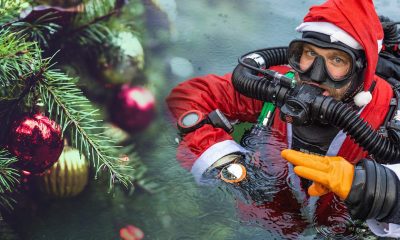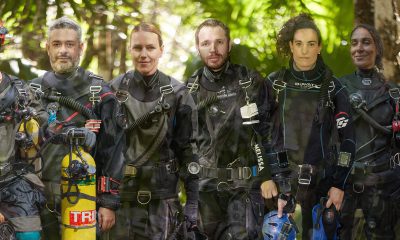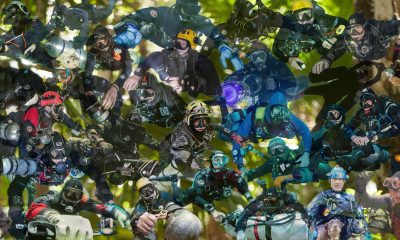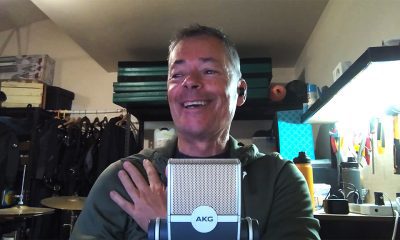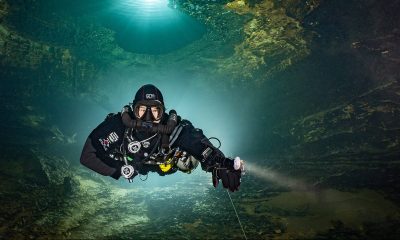Latest Features
The Evolution of Sidemount Design: Two Distinct Paths Shaped by Florida and Mexico
Over the last three decades, two broad, distinct styles of sidemount configuration have evolved as a result of environmental differences and have come to be generally known as Florida and Mexico styles. Sidemount instructor Andy Davis, who has helped sidemount development in SE Asia, explained how the various systems have evolved.
by Andy Davis
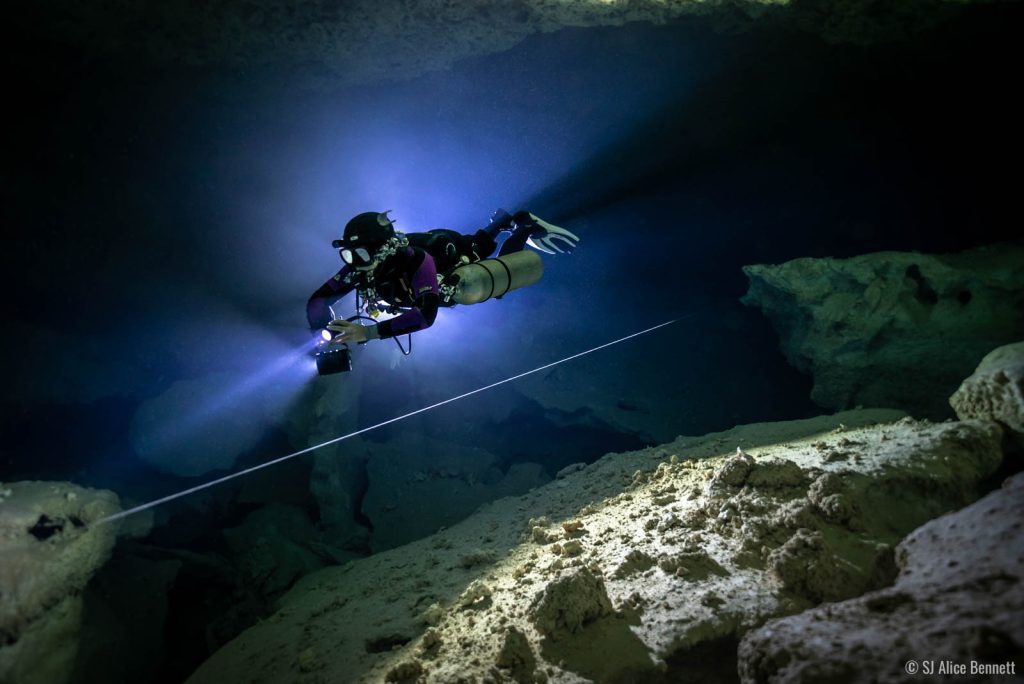
The origins of sidemount can be traced back to the UK, where it was initially developed as a specific technique for pushing beyond flooded sections during sump exploration. Nevertheless, it was the pioneering innovation of leading cave divers in Florida and Mexico that shaped it into the coherent, diving-focused system that we see today. This article examines how sidemount design was influenced to evolve along two distinct paths by the differing environmental requirements and practices of both Mexican and Floridian cave diving—and how those two developmental strands are now becoming unified as a holistic, singular, design approach.
Why did two distinctive approaches to sidemount system design occur?
The primary factor dictating sidemount design evolution was the water temperature. The Mexican cenotes have consistently tropical water temperatures, whereas the cave systems in Florida are temperate in nature. Cooler water conditions necessitate thicker exposure protection which, in turn, dictates a logical advantage in utilizing higher-capacity steel cylinders. Conversely, in tropical water conditions, aluminum cylinders are ubiquitous, and are preferable for achieving a balanced rig approach when diving with lightweight wetsuits.
For that reason, the development of sidemount design in Mexico reflected the best solution for cave diving with lightweight aluminum cylinders; whereas, in the Florida caves, sidemount design reflected a straightforward solution that evolved for diving with heavier steel tanks.
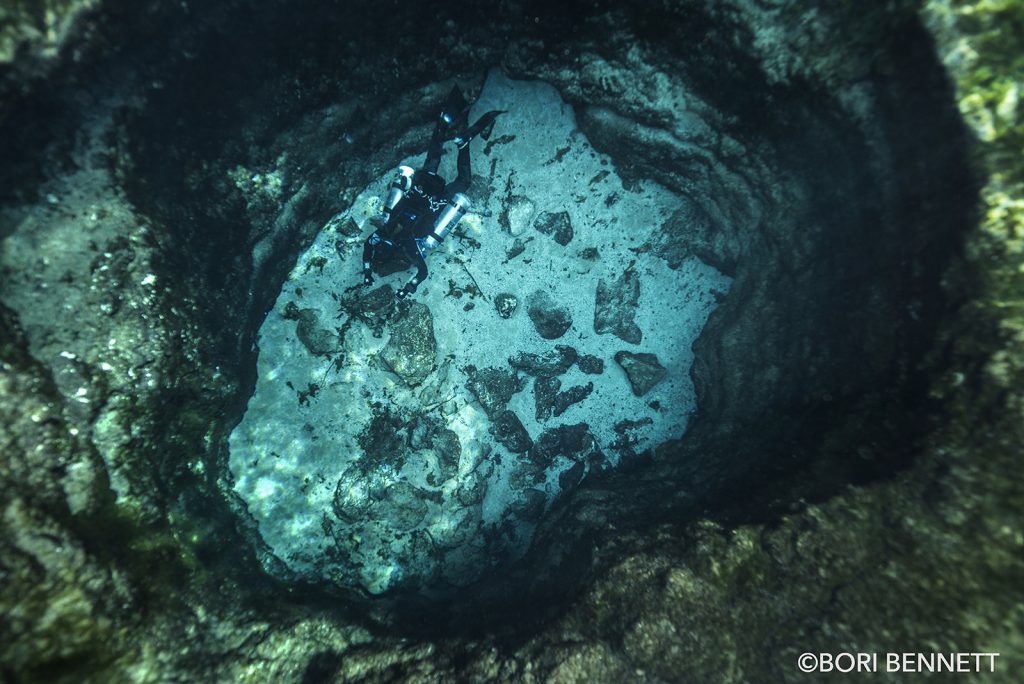
Sidemount development in the USA
The need to support the high-capacity steel cylinders commonly used in US cave diving demanded a sidemount BCD with substantial lift capacity. The logical solution for that was to adapt existing backmount systems and, consequently, US sidemount system design reflected the modification of existing donut or horseshoe style wings. Without cylinders in place at the rear to restrain the wing it would taco (fold up).
That issue led US sidemount pioneers to sandwich the wing between two conventional backplates. However, because a metal backplate wasn’t needed to support banded doubles, they were soon replaced with lightweight soft backplate systems, along with an external nylon plate to retain the wing. With further design devlopment, dedicated oval or triangular-shaped sidemount wings started to replace conventional backmount wings, but the use of soft, backplate style harnesses persisted. That fundamental design was ubiquitous to American sidemount system manufacturers until the last few years.

Sidemount development in Mexico
Cave divers in Mexico were not constrained by the necessity to support heavy steel cylinders. This allowed for greater functional improvisation in what could be used as a buoyancy wing; the use of 10 liter MSR hydration bladders was a prime example. These smaller-capacity wings could easily be mounted upon bare harness systems; positioned exactly as desired because of their smaller size. To reduce superfluous weight, bulk, and inflexibility, it was possible to minimize the standard one-piece backplate by splitting and reducing it into two small plates at the shoulder and lumbar areas purely for threading the harness webbing. Those plates, being separate, were connected by an adjustable-length spine strap that could be tailored to the diver’s height. Beyond simply minimalizing weight and bulk, this length-adjustable harness system also has specific functional advantages for diving with aluminum cylinders, which I shall describe.
The operational difference between using steel and aluminum cylinders
Beyond merely dictating necessary wing capacity, the buoyancy characteristic differences between high-capacity steel and aluminum cylinders present more nuanced demands for sidemount diving. Those characteristics have a direct effect upon the sidemount diver’s ability to retain trim and stability throughout their dive.
High-capacity steel cylinders are relatively simplistic in terms of their buoyancy characteristics; they remain negatively buoyant even when depleted. Due to that consistency, a sidemount diver using steel cylinders can achieve trim throughout their dives by using the common diving approach of balancing weighting across both sides of their center of gravity.
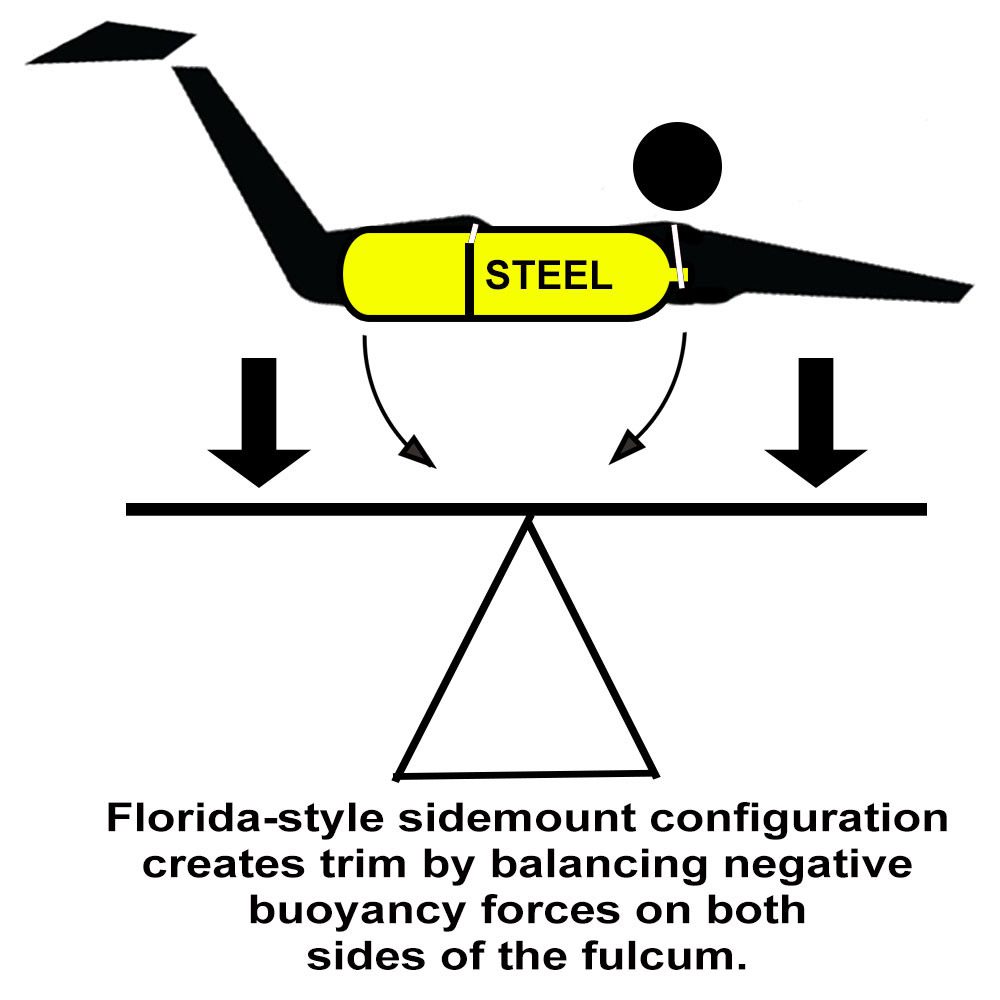
In contrast, aluminum cylinders transition from negative to positive buoyancy as gas is consumed. That shift in overall buoyancy is mostly apparent in effect toward the base of the cylinder, as the weight of cylinder valves and regulator first-stages retains some negative buoyancy at the top of the tank.
Particular to sidemount diving, attaching aluminum cylinders at the hips has a direct and dynamic effect on the divers’ trim. While aluminum cylinders remain negatively buoyant, as with steel cylinders, the diver will be pulled down where the cylinder attaches at their hips. However, when an aluminum cylinder becomes positive, that force will pull the sidemount diver upwards from their hips. They will shift from being leg-heavy to leg-light as their dive progresses.
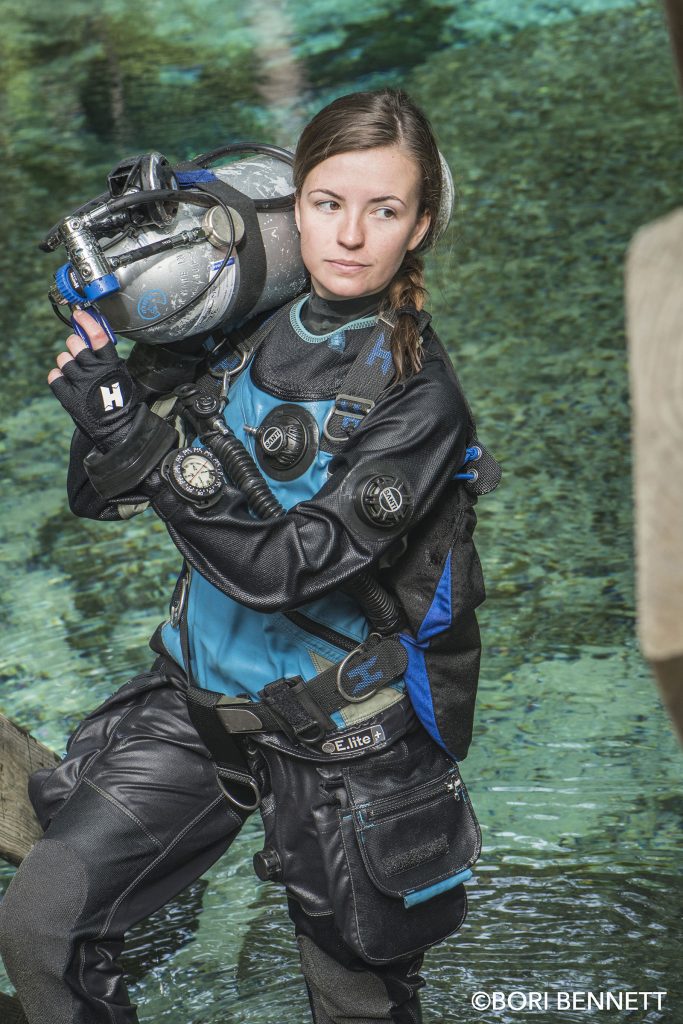
That cylinder buoyancy dynamic effect may be minimal and unremarkable for recreational sidemount divers, but it can become unmanageably destabilizing for technical sidemount divers carrying a greater number of cylinders for much longer stops.
This aluminium cylinder buoyancy dynamic prohibits simple trim weighting strategies; as weighting to achieve horizontal trim at the outset of the dive would only exacerbate and exaggerate unbalanced trim in the later stages of a dive.
How Mexican-style sidemount design resolves the issue of inconsistent trim
The fundamental difference between Mexican-style sidemount and Florida-style sidemount is how the respective systems enable horizontal diver trim throughout the dive. Where sidemount systems evolved for diving high-capacity steel cylinders to allow simple trim weighting distribution across the center of gravity, Mexican-style sidemount systems seek to balance variable buoyancy forces predominantly on one side of the fulcrum.
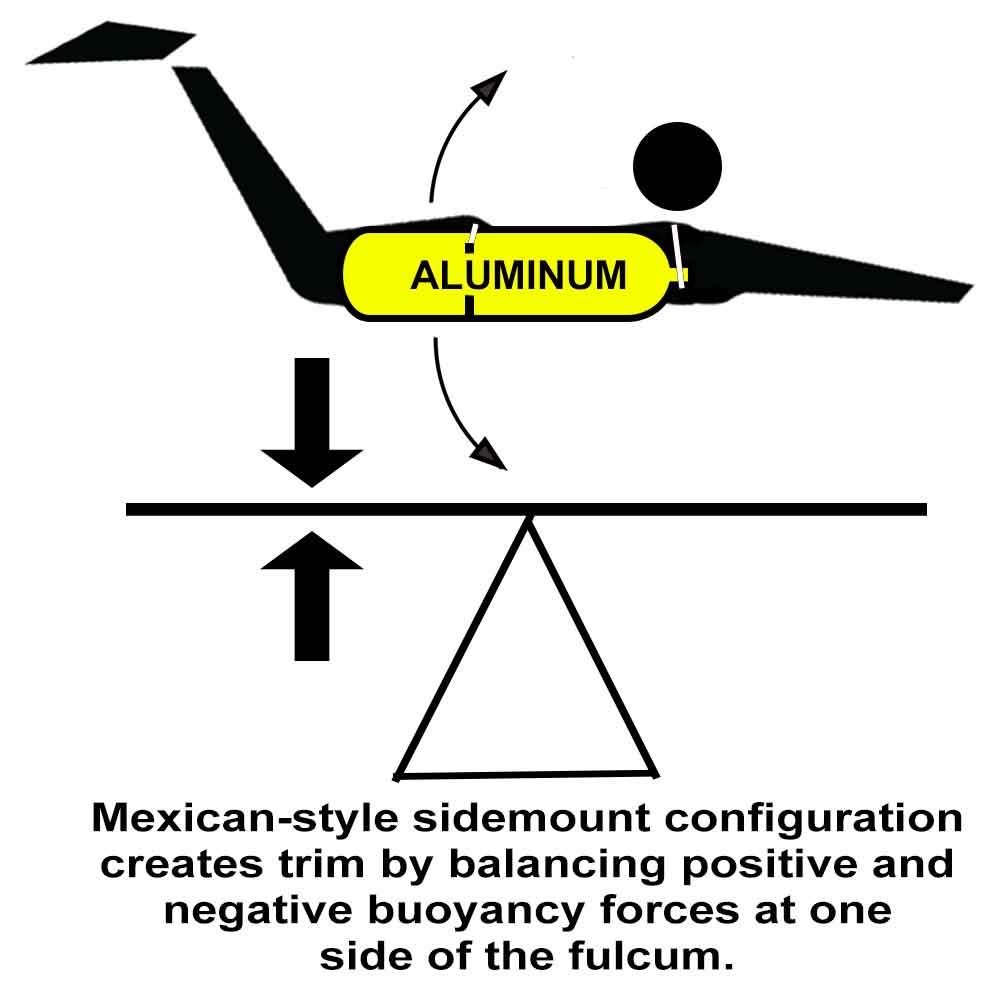
This is achieved by keeping the vast majority of wing buoyancy, and ballast weighting, as far as possible below the divers’ center of gravity. At the outset of a dive, with full aluminum cylinders, the effect of negative buoyancy upon the lower body is countered by lift from the wing. Later in the dive, as cylinders become depleted and gas is removed from the wing, the effect of positive buoyancy upon the lower body is counter-affected by the divers’ weighting. Optimally weighted, and with an ideally configured sidemount system, the diver enjoys consistent trim by balancing out the changing positive and negative buoyancy forces at their hips.
It is this need to keep both wing buoyancy and weighting as far as possible below the divers’ center of gravity that makes the Mexican-style harness design so effective for diving with aluminum cylinders. Specifically, the ability to adjust the length of the spine strap between the lumbar and shoulder plates so that the wing and weighting can be positioned for the most effect directly over the hips, where the cylinders are attached. That ability does not exist, or at least is severely restricted, in the fixed-length soft backplate systems employed within Florida-style sidemount design.

Modern unification of the Florida and Mexico-style sidemount design paths
For several decades, there was ongoing debate between warm and cold water sidemount divers. Mexican-style designs were adept for aluminum cylinders, but the need to retain the majority of wing buoyancy across the lower torso proved problematic to streamlining when a greater volume of gas was needed in the wing. Simultaneously, warm-water sidemount divers using aluminum cylinders struggled to achieve innate trim throughout their dives when using Florida-style systems. At their most desperate, the divers improvised by adding weights to their cylinders to replicate the buoyancy dynamics of steel cylinders.
What I consider to be the latest generation of sidemount system designs overcomes those barriers. They utilize the concept of a length-adjustable harness along with providing the majority of wing buoyancy and weight placement options on the lower torso. At the same time, they utilize a wrap-around wing that provides sufficient lift for the heaviest cylinder options without being detrimental to streamlining. Unlike predecessor generations of sidemount design, these systems, such as the XDeep Stealth and Hollis Katana 2, have gained immediate traction and popular approval among both the cold and warm water sidemount diving communities.
I anticipate that more dive gear manufacturers will incorporate this unification of design paths to embrace the principles and features needed to make sidemount systems universally optimal for any cylinder approach or regional diving practice.
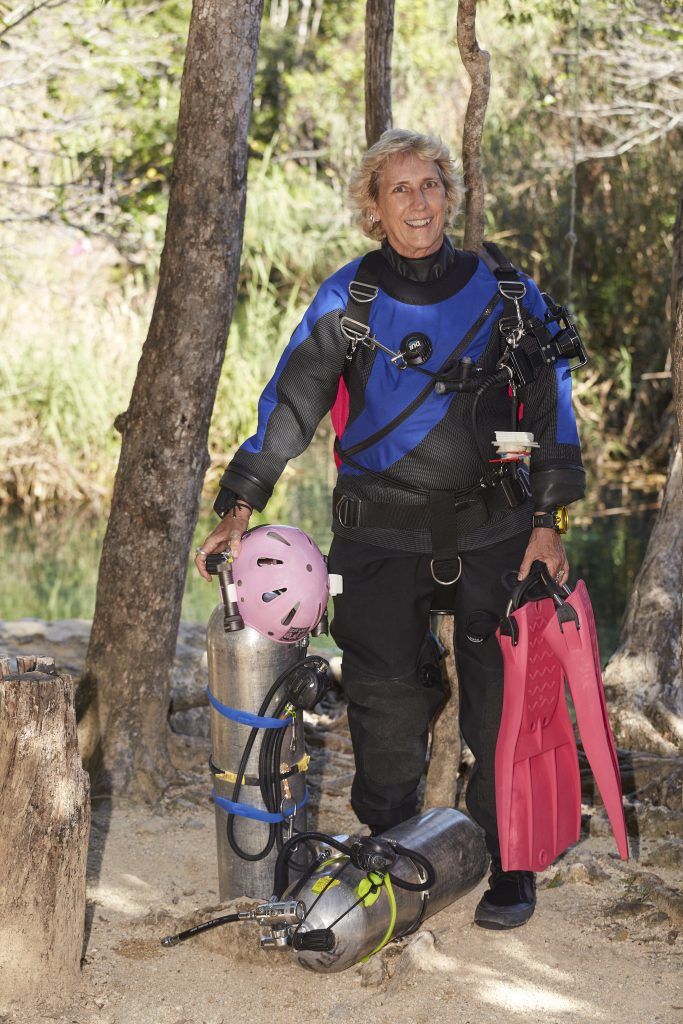
Please Take a Minute And Complete our New: Sidemount Diving Survey. We will report the results in a coming issue.
DIVE DEEPER
How to Choose A SM Instructor by Andy Davis
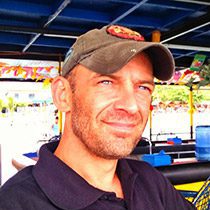
Andy is a RAID technical instructor specializing in sidemount and advanced wreck diving. Over 25 years of actively diving, he has also earned instructor ratings with BSAC, PADI TecRec, ANDI and SSI. He is known as a sidemount pioneer in SE Asia and as a writer for various diving magazines and his popular blog; scubatechphilippines.com. Andy has designed technical diving courses for several scuba training agencies. He retired from the Royal Air Force as an officer in 2007 and has been a full-time technical diving professional ever since.




















